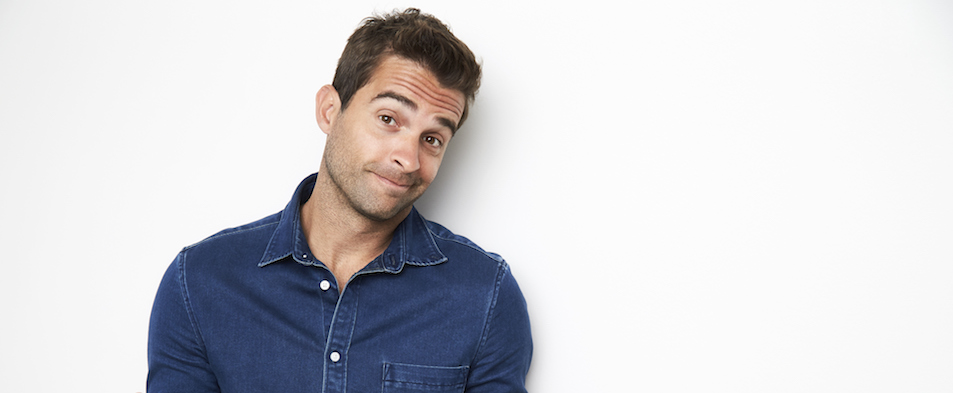
25 Oct Are You Giving Away Your Influence?
We are all influencers. Though we are in an age where we are inundated with people who position themselves as influencers simply because they have a certain look or high number of social media followers, it is critical to not lose sight of the fact that we are all influencers. So, let’s discard this current notion of “Influencers.” We are ALL influencers with the ability to have a profound effect on those in our circles of influence. Depending on how we handle our interactions, we also have the ability to give our influence away, just as I did recently.
I completely blew it with my daughter a few days ago. Truth be told, it wasn’t the first time, and as much as I wish it wouldn’t be, it’s unlikely to be the last time. Apparently, my parental mind and her pre-teen mind see our roles a little differently. Who knew?
The long and short of it is, I had an expectation of her. I delivered my expectation in the stereotypical, “Because I said so.”, fashion. Not only was it not acted upon, my follow-up was responded to with the not-so endearing attitudes of defiance and disdain. That’s when I lost it: I got what my wife calls, ‘The Look’, on my face and I raised my voice. Just as quickly, the look on her face and her posture changed, telling me that she had now completely shut me out.
I gave away my influence.
That momentary lapse caused me to then spend the next 20 minutes working with her to simply start the process of getting it back. I had known better and I blew it anyway. Now I had made it harder than if I had simply chosen a better approach in the beginning. The truth is, we all-too frequently give our influence away, and not just to our kids. We do it with our significant others, colleagues, and friends.
I have 4 kids, a wife, numerous friends, and colleagues. One thing all of these relationships keep trying to teach me is that going toe-to-toe never results in a real win. I may win the momentary skirmish by the force of my position as a parent or authority, but I certainly haven’t leveraged the power of my influence for long-term gain. I’ve occasionally “won” by the power of threat, but I’ve not influenced anyone to think and act differently.
What Can We Do When We Give Our Ability To Influence away?
Chances are, we may need to apologize before we can move the conversation to a healthy place and move forward. Even if it’s only the way you’ve handled yourself thus far, that’s often a great place to start, because right now that other person is in a mental state that will not allow them to move forward. In our house, we call it Croc Brain. I first read about this concept in a sales book by Oren Klaff. It may seem strange to apply a sales technique to relationships, until we consider that we are all trying to sell our ideas to those around us.
Like crocodiles, we all have an instinctual response of fight or flight. What’s happening in our brains is an external event has gotten the amygdala and hypothalamus working together to prepare the body to fight or flee. They are simply trying to decide which one it’s going to be at this point. That is why, whether we are dealing with our child, co-worker, or someone else, getting in their face is about the least successful method of working toward a positive resolution. Once they are there, until we get them out of their Croc Brain, we have zero chance of connecting and influencing.
Though it seems completely counter-intuitive to what we may be thinking and feeling, in the case of our own children, relaxing our posture and offering a hug is often one of the most powerful ways to get past this hurdle. Frustration and tension levels are likely high, but we are going for connection and influence here, which is ultimately a win for everyone. The reality is, we can’t hug most adults, and it’s not always appropriate to hug kids, (especially when they aren’t our own). So, here are some other ways to both keep and regain influence:
When coaching and correcting, come alongside people, not at them. This is both a figurative and literal statement. By nature, attack puts people on defense. Similarly, squaring off face to face implies force and domination. Real power in these relationships comes from influence. Sitting down next to someone or standing side by side says, “We’re in this together.” For a boss, this may mean coming out from behind the desk. The reality is that some things will simply be non-negotiable. However, an alongside approach says that we are partners in achieving a positive outcome together. There’s likely an outcome that needs to happen, but we are signaling our partnership in achieving it. This positions parent and child, boss and employee, partners, and friends alike for a success that all are invested in and can celebrate together when it is achieved.
Relate to the other person and find areas of connection. No matter how we categorize the type or status of relationship, we are in relationship with everyone we come in contact with. Understanding this and finding areas of agreement can be a real game changer. It brings the other person to a place where they have the option of connecting rather than simply reacting. Identify with them and build a bridge that gets you both to a healthy place of connection and partnership.
Ruling by force is a farce, so we must avoid losing our tempers, even if it means a long pause or walking away for a minute. A big part of this is deciding ahead of time what is worth getting worked up over. See, force is like the fine print in contests that says you must be present to win. The only way you can have a pseudo ‘win’ with force is if you are actually there to push for your agenda. Real power and effectiveness lie within the power of influence. This influence remains present, even when we are not.
Few approaches match the results of leading by example. No one wants to be managed. We all want to be led, even the leaders among us. There is a stability and synergistic effect that happens when people are led with examples of who we can be when we are at our best. This includes listening more than we are talking, which can be challenging for some of us. When we listen more than we are talking, the other party feels valued. When they feel heard they feel valued, and they are more likely to invest in the situation and take ownership in the outcome.
The goal is to use our positions as influencers to create healthy, thriving, and productive relationships instead of leaving a trail of destruction and giving our influence away. None of this means that we are meant to be pushovers. People aren’t positively influenced by pushovers any more than they are positively influenced by aggressors. It’s a lesson that requires daily learning, but one in which we can gain greater proficiency with each interaction.
Join The Conversation:
- What strategies do you use to gain positive influence in your relationships?
- How could operating from a position of influence change your relationships?
- Why is it important to you to be more influential?



No Comments